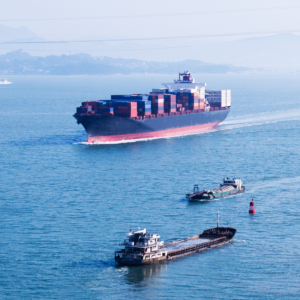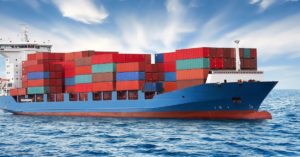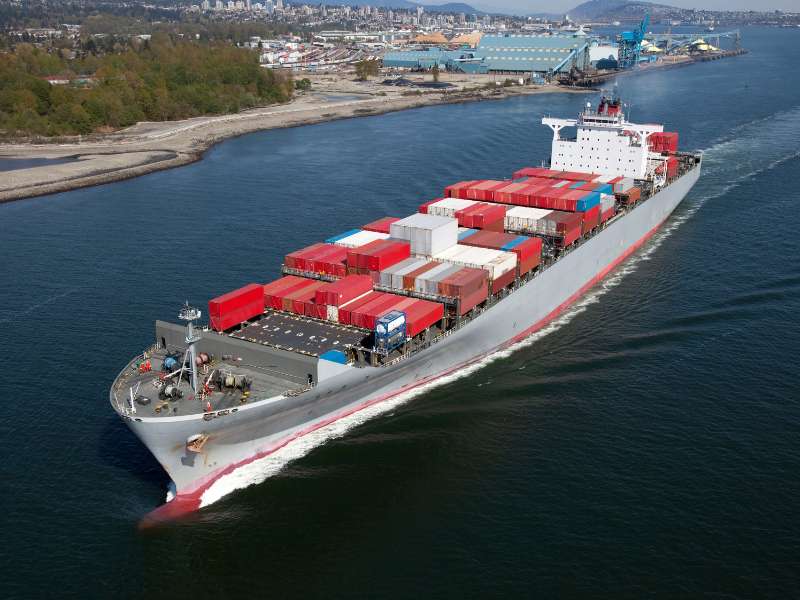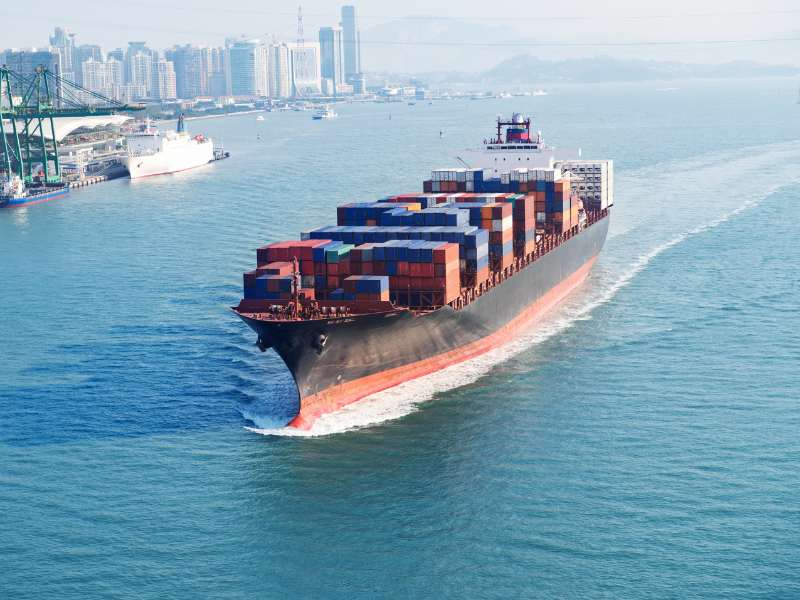1.Shipping logistics to the United States to select agents
(1) Depending on the scale of the freight forwarding company, if it has only a few employees, or even no warehouse, or only a small warehouse, the risk coefficient of choosing this company is relatively large. Of course, scale is not the bigger the better, large companies also have more customers, and the customer service of the small volume of goods may not be able to compare with small companies. Although some reliable companies are small, they often communicate more timely when problems arise and pay more attention to the service experience of small sellers. Generally, there are dozens of people on the scale, and the company established for a long time can give priority to the shipping logistics from China to the United States,How to choose shipping agent form China to the USA?
(2) The qualification of the freight forwarding company should first see their business license, the date of the establishment
of the company, and whether the legal person of the company or the location of the company often changes. If a company has been around for more than a decade with no change of legal person, the company’s address has been in the same place for a decade, indicating that the company is not operating illegally or in dispute with customers. The risk factor for such a company is relatively small. Through the tian yan or enterprise search and other professional websites to query, looking for formal qualification of the company trial and error costs will be lower
(3) the freight company’s price is too high or too low prices are not recommended for consideration, the purpose of business is for-profit if a company is a perennial LanShou at below the normal market price of goods, it is not a normal phenomenon, may through various routines and traps to earn profits, don’t want to annoying matter a lot of don’t covet petty gain
(4) communicate with the salesman to communicate with the salesman, on the one hand, the salesman is not professional enough, on the other hand, the salesman treats people, whether to consider the owner. A salesman is a direct link between goods and owners of goods, looking for a professional, a strong sense of responsibility salesman is very important. Can not stand in the customer’s point of view to do things, the freight agency to provide services estimated will not be reliable
(5) It is easy to find a freight forwarding company, but difficult to find a freight forwarding company that fits with you. It is great luck to find one at a time.
2.About shipping logistics to the United States customs clearance
The customs clearance of American sea transportation is generally done by FCL, and it is rarely done by a single shipment. Once there is a problem with one shipment in one container, the whole container will be detained, and it will be a long time to wait for the release. Us maritime customs clearance must be aware of the points that need to be paid attention to and customs clearance documents in advance:
(1) The customs will usually inform you whether to release the goods (by sea) within 48 hours.
(2) Some cargo ships have not arrived at the port of the Us maritime export, and the customs have decided to check because there are questions on the declaration and customs clearance documents.
(3) The US maritime customs broker shall send all the documents including the original or copy of the importer’s original documents to the customs. The customs officer shall check the written documents and approve whether to release or inspect. In that case, the clearance could take about three days.
3.Inspection of shipping logistics to the United States
Apparel and accessories account for a relatively large proportion of U.S. shipping inspections, accounting for 22 percent of seizures. This was followed by consumer electronics, which accounted for 18% of seizures, followed by shoes/watches/jewelry/pharmaceuticals/personal care products/handbags/purses, etc.
In the case of container inspection by the US Customs, the general inspection time is about 2~6 working days for X-ray scanning, 2~3 weeks for unpacking inspection, about 15 days after boarding the ship to the port, and 2-3 days for customs clearance. Therefore, when shipping cargo to the United States is inspected at the customs, it is necessary to avoid goods with high inspection rates and sensitive goods, to quickly clear the customs.
Shipping Instructions:
(1) Transportable goods: electronic products, household products, toys, cosmetics, liquids, pure batteries, adult products, etc. Imitation brand infringement products are not accepted.
(2) Transportation time: normal 6-10 days to UPS delivery, the West of the United States 1-2 days for signature, the East of the United States 5-6 days for signature.
(3) The loss of goods and other problems and solutions: if the customs clearance of goods cannot be completed, non-product reasons shall be compensated according to the value of goods, and there is a shortage of goods on the shelves at the background. Assist in the investigation and provide proof of receipt.
4.Shipping logistics to the United States cost composition
Shipping is a cost-effective way to ship goods to the United States. Different routes and shipping costs are not the same. Sea freight to the United States generally includes basic sea freight and surcharge, additional freight such as fuel surcharge BAF, currency adjustment surcharge CAF, peak season surcharge PSS, overweight surcharge OWS, and AMS to the United States. In addition, there are miscellaneous fees, such as THC(Terminal handling fee) at the port of departure, ISPS, CTF(air cleaning fee), and PIER PASS fee at the port of destination. In addition, there is an AMS fee of USD25/ ticket.
Shipping Logistics to USA surcharge
(1)Shipping Logistics Terminal handling fee (THC)
The full name is Terminal Handling Charge. It can be further divided into OTHC-Origin Terminal Handling Charge and DTHC-Destination Terminal Handling Charge.
(2)Shipping Logistics Container Imbalance Surcharge (CIC)
CIC is a Container Imbalance Charge, sometimes also called Container Surcharge. This fee is a surcharge imposed by shipping lines to cover the cost of moving empty containers due to trade imbalances or seasonal variations in the flow of cargo and containers.
(3)Shipping Logistics Composite Rate Increase Surcharge (GRI)
GRI stands for General Rate Increase. It is commonly used by the South American route and American route. For port, ship, fuel, cargo, or other reasons, shipping companies incur significant increases in transportation costs, and shipowners add a composite rate increase surcharge to compensate for these increased expenses

(4)Shipping Logistics Currency Depreciation Surcharge (CAF)
CAF stands for Currency Adjustment Factor. Also called CAS-currency Adjustment Surcharge. When the currency of freight is depreciated, the shipping company will suffer a great loss because of currency depreciation. To make up for the loss, the shipowner will pass the loss on to the shipper/shipowner by adding a currency depreciation surcharge.
(5)Shipping Logistics Peak season surcharge (PSS)
PSS stands for Peak Season Surcharge. This charge is commonly in busy season freight is busier when a lot of ship company can borrow an excuse to collect, with our country “chunyun” rise in price is somewhat similar. From April to November, each year is generally the peak season for the world’s freight.
(6)Shipping Logistics Delivery charge at Destination (DDC)
The full name of DDC is Destination Delivery Charge. In terms of DDU and DDP, this cost is only borne by the seller/shipper, otherwise, it will be paid by the buyer/consignee. For example, CIF clause – Buyer/consignee shall bear all costs and risks after the goods pass the ship’s rail at the loading port, so all costs at the destination port including DDC shall be borne by party/consignee.
(7)Shipping Logistics Panama Canal Surcharge (PTF)
PDF stands for Panama Canal Transit Fee. Surcharge and the Suez Canal by the same token, the far east and west of the United States (hereinafter referred to as the west) to the United States to the east (eastern) route is typically through the Panama canal, ships through the Panama canal shipping company need to pay the canal authority certain shipping fees, the cost of the owner in the form of a charge to the customer through the Panama canal surcharges.
(8) Shipping Logistics Extra Length Surcharge (LLA)
LLA stands For Long Length Additional, also called Over Length Additional or Surcharge For Over Length Additional. A surcharge is charged to cover the increased operating costs of a single piece of cargo whose length exceeds a certain standard (which may vary from forwarder to shipper), which requires special equipment or handling, which is difficult to handle, or which requires special handling on the stowage of the ship.
Generally, if it is more than 9 meters, it is considered an extra long. If it is a container cargo, it is generally defined as extra-long if it is more than 6 meters. The rate increases according to the length.
(9) Shipping Logistics Overweight Surcharge (HLA)
HLA stands For heavy-lift Additional, also known as Surcharge For Over Weight. Refers to the weight of a single piece of goods that exceeds a certain standard (different forwarder or the standard stipulated in the owner may not be the same), need special equipment (such as a heavy crane), or special operations (such as bedding, reinforcement of the binding or reinforcing materials and artificial), loading and unloading operation is more difficult, or need special treatment on the ship stowage, A surcharge charged to cover increased operating costs.
Generally, more than 2 tons, 3 tons, or 5 tons is considered overweight. Surcharge for excess weight will be charged according to weight, the higher the surcharge will be, if transshipment is required, the surcharge will be charged for each transshipment.
(10)Shipping Logistics Container Service Fee (CSC)
CSC stands for Container Service Charge.
(11)Shipping Logistics Emergency Cost Surcharges (ECRS)
Emergency Cost Recovery Surcharge (ECRS) is an Emergency Cost Recovery Surcharge (ECRS), also known as an “inclement weather operation Surcharge”, which is applied when bad weather conditions cause a significant increase in shipping and operation costs.
5.Process of shipping goods to the United States
(1) Book space, determine the delivery address, name of goods, weight, volume, container type, container quantity, destination, and shipment time.
(2) Loading, arrange picking up, loading, loading, fumigation, and other matters according to the determined time.
(3) Customs declaration, according to the packing list of goods, related materials, and invoices for customs declaration and export.
(4) Check materials, supplement materials and make documents to the shipping company after customs clearance and release, and check whether the information on the bill of lading is correct.
(5) Transport and pre-customs clearance, track the ship’s dynamics and arrival time and send the original bill of lading, certificate of origin, and relevant documents to the customs of destination for pre-customs clearance in advance.
(6) Customs clearance: the packing list, invoice, certificate of origin, and relevant documents shall be submitted to the local customs system several days before the arrival of the goods.
(7) Pay taxes, follow up on the data of the customs system to calculate the corresponding tariffs, and arrange tax payment after confirmation.
(8) Pick up the container and deliver the goods. Pick up the goods after the customs release. If the whole container is loaded, trucks will be directly arranged to send the goods to the designated address of the consignee. In the case of LCL bulk goods, the warehouse shall be unpacked first, and then express delivery shall be arranged to the designated address of the consignee.









